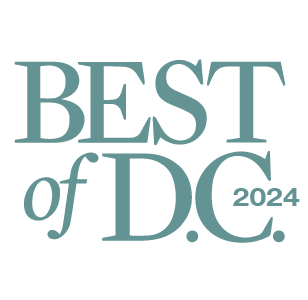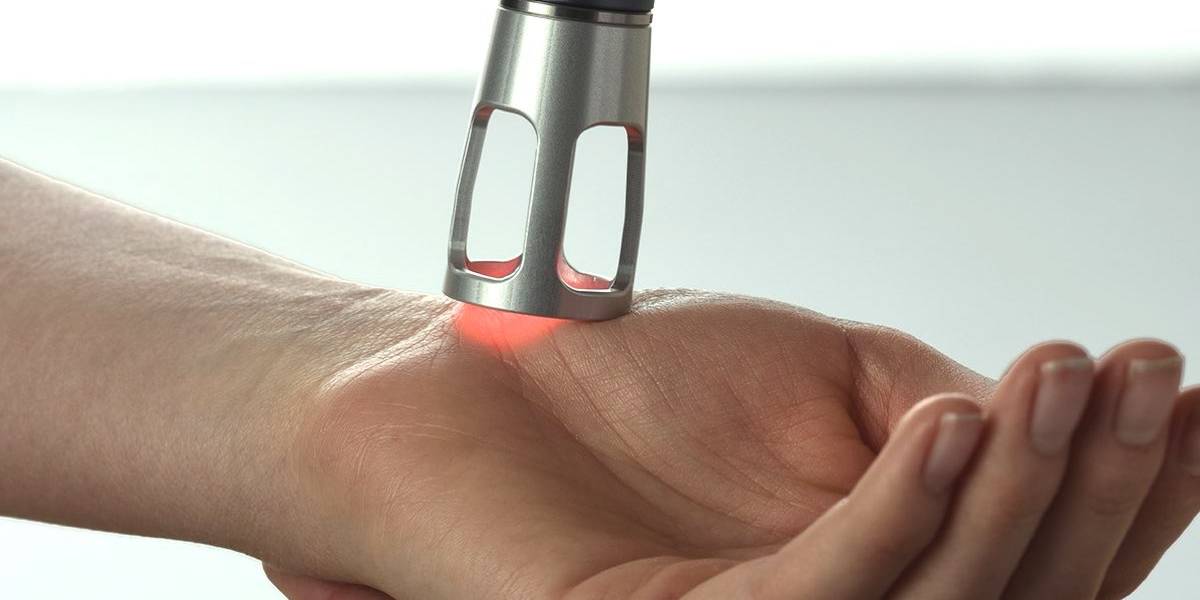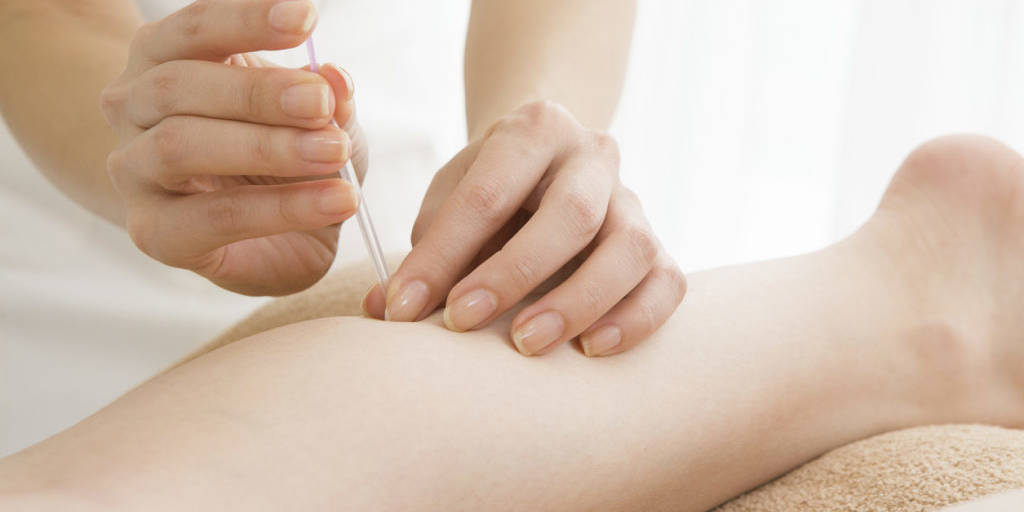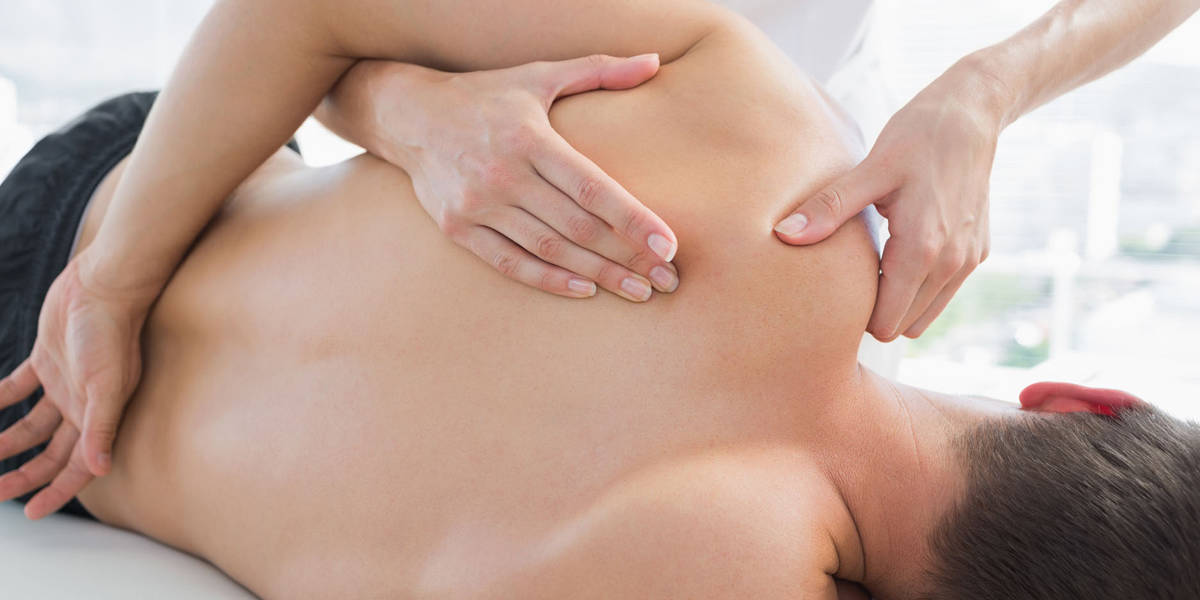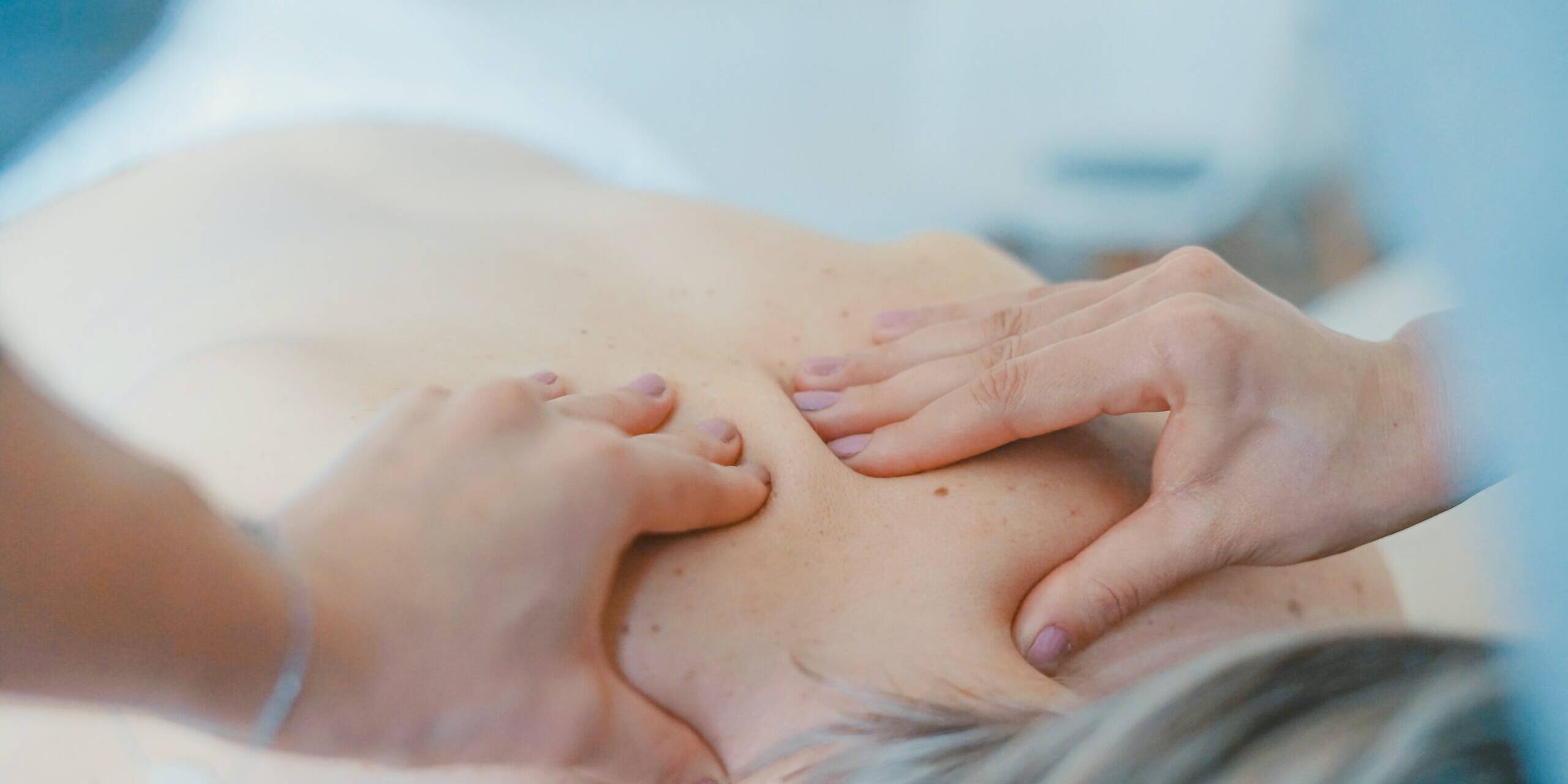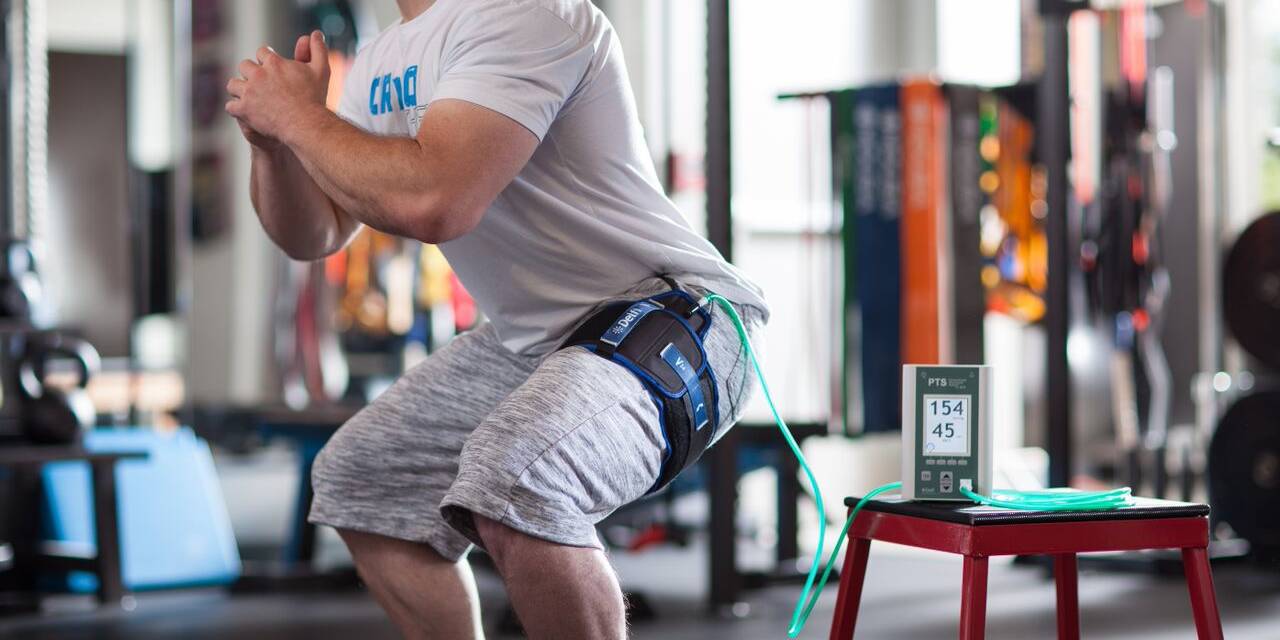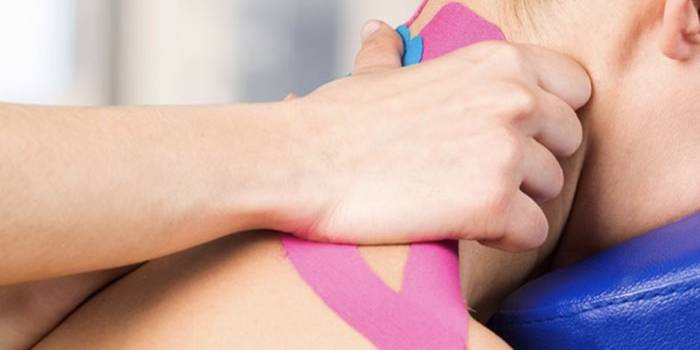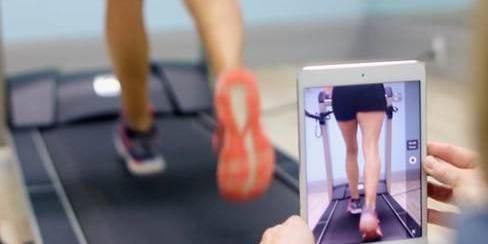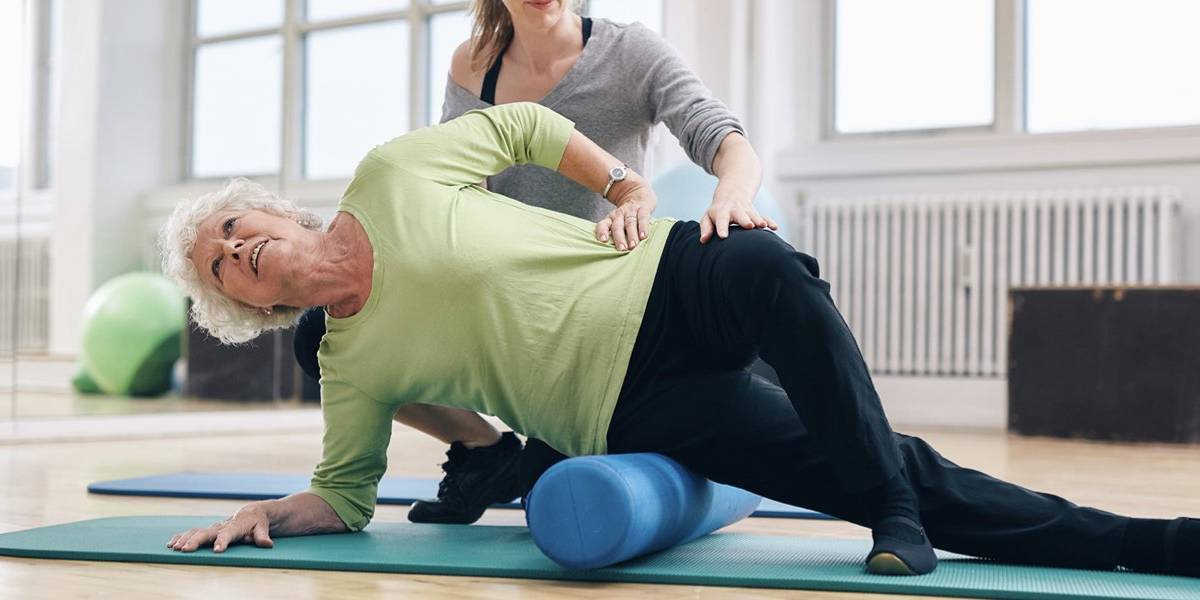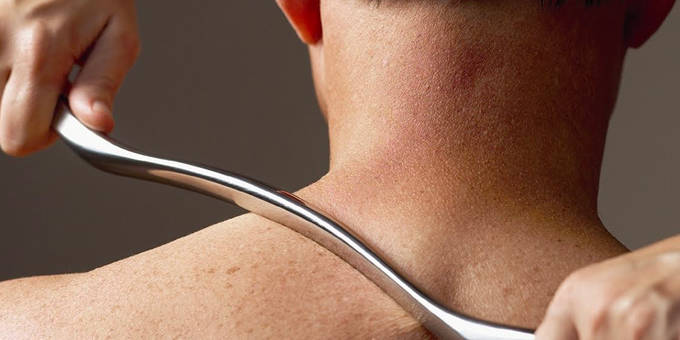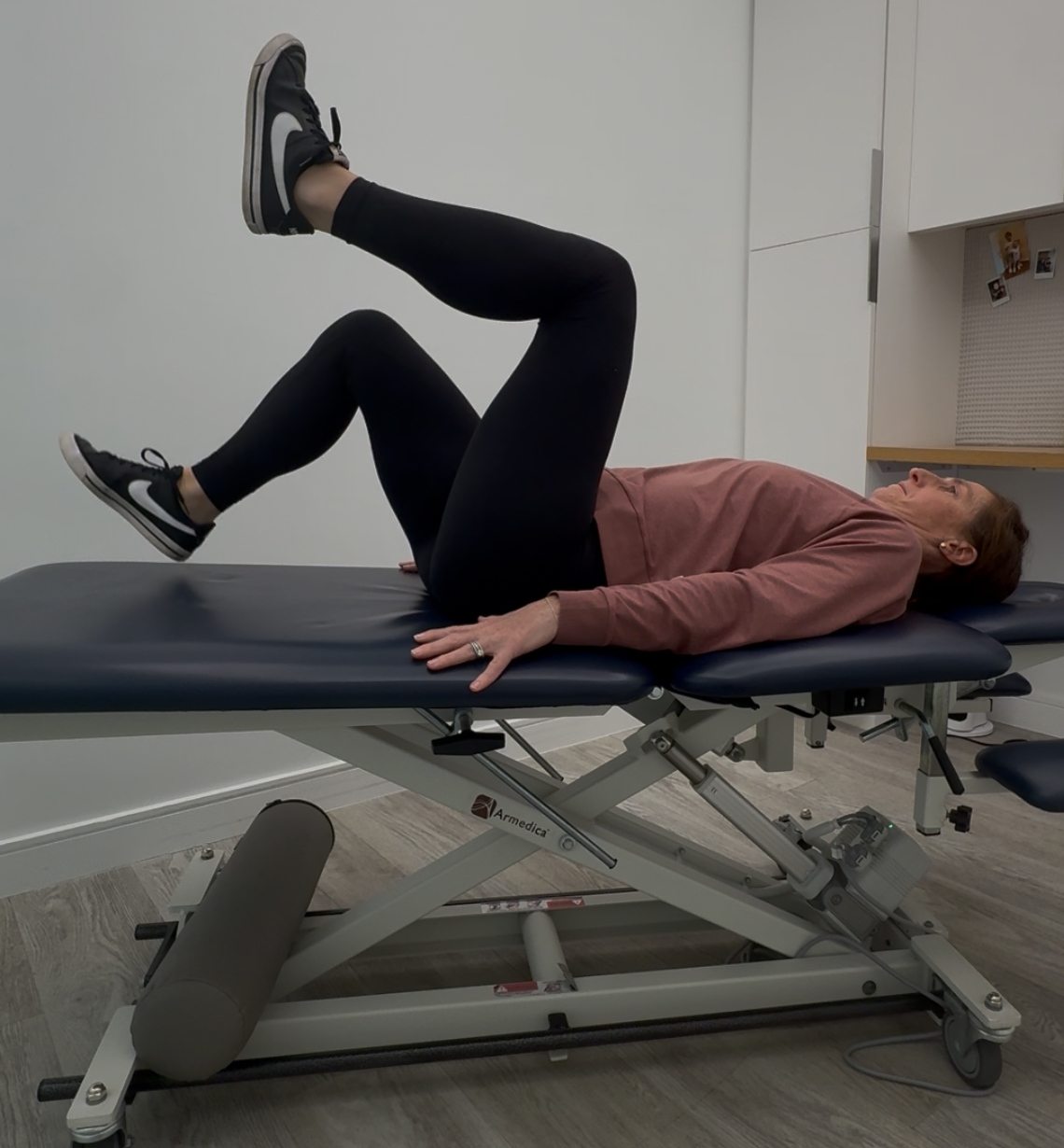Physical Therapy for de Quervain’s Tenosynovitis in Washington, D.C.
Pain Relief for de Quervain’s Syndrome
Does physical therapy work for de Quervain’s tenosynovitis?
Physical therapy helps manage de Quervain’s tenosynovitis, a condition characterized by pain and swelling in the tendons on the thumb side of the wrist. De Quervain’s tenosynovitis physical therapy can reduce inflammation, alleviate pain, and restore function using a range of treatments including exercises to strengthen the muscles and improve your range of motion of the thumb and wrist, and manual therapy techniques to reduce tendon irritation.
We may also advise on ergonomic adjustments to prevent strain on affected tendons during daily activities. With a tailored physical therapy program from Release PT, many of our patients experience significant improvement in their symptoms and return to their normal activities.

What is the best exercise for de Quervain’s tenosynovitis?
For those suffering from de Quervain’s tenosynovitis, incorporating thumb stretch and wrist flex extension exercises can significantly aid in recovery. Determining which physical therapy exercises for de Quervain’s tenosynovitis are best depends on your specific symptoms and recovery goals.
The thumb stretch targets affected tendons alleviating tightness and improving flexibility. Wrist flexion-extension exercises strengthen and increase your range of motion in the wrist. Combining the two, under the guidance of one of our Release PT physical therapists provides the most comprehensive approach to managing de Quervain’s symptoms.
What movements should be avoided with de Quervain’s?
When managing de Quervain’s tenosynovitis, avoid movements that can exacerbate it by putting additional strain on affected tendons. These include:
- Forceful Gripping or Clenching: Activities that involve a tight grip or forceful clenching of the hand can increase pain and inflammation in the tendons.
- Repetitive Thumb Movements: Actions that require repetitive motion of the thumb, such as typing or gaming, should be minimized.
- Wrist Twisting: Movements that involve twisting the wrist, especially when combined with thumb flexion or extension, can aggravate symptoms.
- Lifting Heavy Objects: Picking up heavy items with the thumb and fingers can put undue stress on the wrist and exacerbate pain.
- Radial Deviation: Movements that bend the wrist towards the thumb (radial deviation) can also worsen discomfort.
Modifying activities to reduce stress on the wrist and thumb, using ergonomic tools, and taking regular breaks during tasks can help manage symptoms. In some cases, we might recommend wearing a splint to immobilize the thumb and wrist can provide relief by limiting aggravating movements.
De Quervain’s Tenosynovitis FAQs
The conservative rehab protocol for de Quervain’s tenosynovitis emphasizes:
- Rest: Minimize activities that worsen symptoms to decrease inflammation.
- Splinting: Use a thumb spica splint for immobilization and healing.
- Ice Therapy: Apply ice to lessen swelling and pain.
- NSAIDs: Take medications like ibuprofen for inflammation and pain relief.
- Physical Therapy: Tailored exercises for flexibility and strength
- Activity Modification: Adjust daily habits and workspace ergonomics to avoid aggravating the condition.
- Corticosteroid Injections: Consider injections for persistent symptoms.
Following this protocol under professional guidance can significantly improve symptoms and aid recovery.
A wrist brace, specifically a thumb spica splint or brace, can help manage de Quervain’s tenosynovitis. This brace immobilizes the thumb and wrist, restricting movements that aggravate the condition, like grasping, pinching, and wringing.
By limiting motion, the brace reduces irritation and inflammation in the tendons, providing pain relief and allowing the affected area to rest and heal. Your Release PT therapist might recommend wearing a wrist brace as part of the initial conservative treatment strategy, especially during activities that could worsen symptoms.
While de Quervain’s tenosynovitis might not go away completely for everyone, proper management using the right treatment approach, can lead to long-term relief and prevent recurrence. With physical therapy, rest, splinting, and anti-inflammatory medications, the condition frequently improves, and symptoms may substantially decrease or even resolve completely over time. The key to successful management is early diagnosis and appropriate, consistent treatment.
For de Quervain’s tenosynovitis, we generally recommend ice instead of heat, especially in the initial stages or during flare-ups. Applying ice to the affected area helps reduce inflammation and numb the pain, providing relief. Ice therapy is advised for 15-20 minutes at a time, several times a day, using a cloth barrier to protect the skin.
Heat therapy may be beneficial in later stages of recovery, particularly if the main symptoms are stiffness and muscle tension around the wrist and thumb. Heat can improve blood circulation and relax tight muscles, but use it cautiously to avoid increasing inflammation. Your physical therapist will go over with you which one they recommend for your individual treatment.
Recovery time for de Quervain’s tenosynovitis varies. Many patients see improvement within weeks of starting conservative treatments like de Quervain’s physical therapy, rest, and splinting. Complete recovery can take several months. Following proper treatment and activity modification is important for healing.
De Quervain’s tenosynovitis is painful due to inflammation of the synovium, the sheath that surrounds two tendons responsible for thumb movement. This inflammation causes the sheath to thicken and narrow, restricting tendon movement. When the thumb moves, the inflamed tendons rub against the narrowed tunnel, leading to pain and discomfort, especially during gripping or twisting motions.
The pain can be exacerbated by repetitive actions that strain the wrist and thumb, further irritating the affected tendons. The combination of inflammation, restricted tendon movement, and repetitive strain contributes to the significant pain associated with de Quervain’s tenosynovitis.
Physical therapy for de Quervain’s tendonitis may focus on therapeutic massage and manual therapy techniques on the wrist and the base of the thumb, targeting the area along the tendons affected by the condition. These tendons are located in the first dorsal compartment of the wrist, on the thumb side.
Therapeutic massage aims to reduce inflammation, alleviate pain, and improve mobility by gently manipulating the soft tissues surrounding the tendons. Our therapists may also work on the forearm and the area around the wrist to release tension and improve overall function. We understand that it’s important to have these therapies performed by a physical therapy professional who understands the anatomy involved in de Quervain’s tenosynovitis to ensure the treatment is effective and safe.
Our Release PT hand physical therapists will conduct a detailed assessment of your hand’s function and condition and guide you through specific exercises targeting strength, flexibility, and mobility, managing your condition to improve hand mobility.
There are many different factors that go into healing and rehabilitating de Quervain’s pain. The skilled team at Release PT is ready to help you recover and get back to your normal, active lifestyle. For more information or to book an appointment, feel free to use our online form or give us a call at 202-974-6621.

About Release Physical Therapy
Release Physical Therapy is an award-winning physical therapy clinic, offering the best-in-class physical therapy to the Washington, D.C. area and surrounding communities. We work one-on-one with our patients to develop an individualized treatment plan that meets their unique needs, conditions, wellness goals and fitness levels.

Our Approach
At Release Physical Therapy, we use evidence-based therapies to target the root cause of a condition, not just the symptoms. We offer a full range of treatments, including manual modalities, technology-assisted therapies, and both traditional and non-traditional techniques. We work one-on-one with our patients to develop an individualized treatment plan that meets their unique needs, conditions, wellness goals and fitness levels. Common conditions we treat include:
- Achilles tendonitis
- AC joint injury
- ankle sprains
- ankle fracture
- ACL injuries
- arthritis
- back injury
- back pain
- bursitis
- carpal tunnel syndrome
- cervical radiculopathy
- cervical strains
- chronic pelvic pain
- CL inuries
- compartment syndrome
- degenerative joint disease
- herniated disk
- de Quervain tenosynovitis
- fibromyalgia
- frozen shoulder
- golfer’s elbow
- headaches / migrains
- hip replacements
- ITB syndrome
- impingement syndrome
- knee replacement
- neck pain
- nerve entrapment
- osteoporosis
- osteoarthritis
- overuse injuries
- knee cap pain syndrome
- knee tendinitis
- plantar fasciitis
- rotator cuff tear
- runner's knee
- scoliosis
- sciatica
- shoulder tendinitis
- spinal stenosis
- spondylolisthesis
- shin splints
- tennis elbow
- thoracic outlet syndrome
- TMJ dysfunction
- wrist fracture
- and several others...
What Patients Are Saying
Physical therapy is about results. Too often, patients discontinue therapy because of a bad experience. At Release Physical Therapy, we are committed to providing the highest quality care through patient education, on-going clinician training, and personalized approach to treatment. We believe that everyone should live pain-free and healthy. But don’t take it from us, read what our patients have to say about their experience with Release Physical Therapy.
Our Physical Therapists
Release Physical Therapy staffs the top physical therapists in Washington, DC. Our experienced and highly trained physical therapists specialize in treating the outpatient orthopedic population, including sports therapy, chronic pain management, orthopedic/spinal therapy, pre/post-surgical therapy, as well as wellness and prevention. Our PTs utilize a wide range of therapies and technologies to deliver a personalized care plan. All of our physical therapists are accepting new patients.
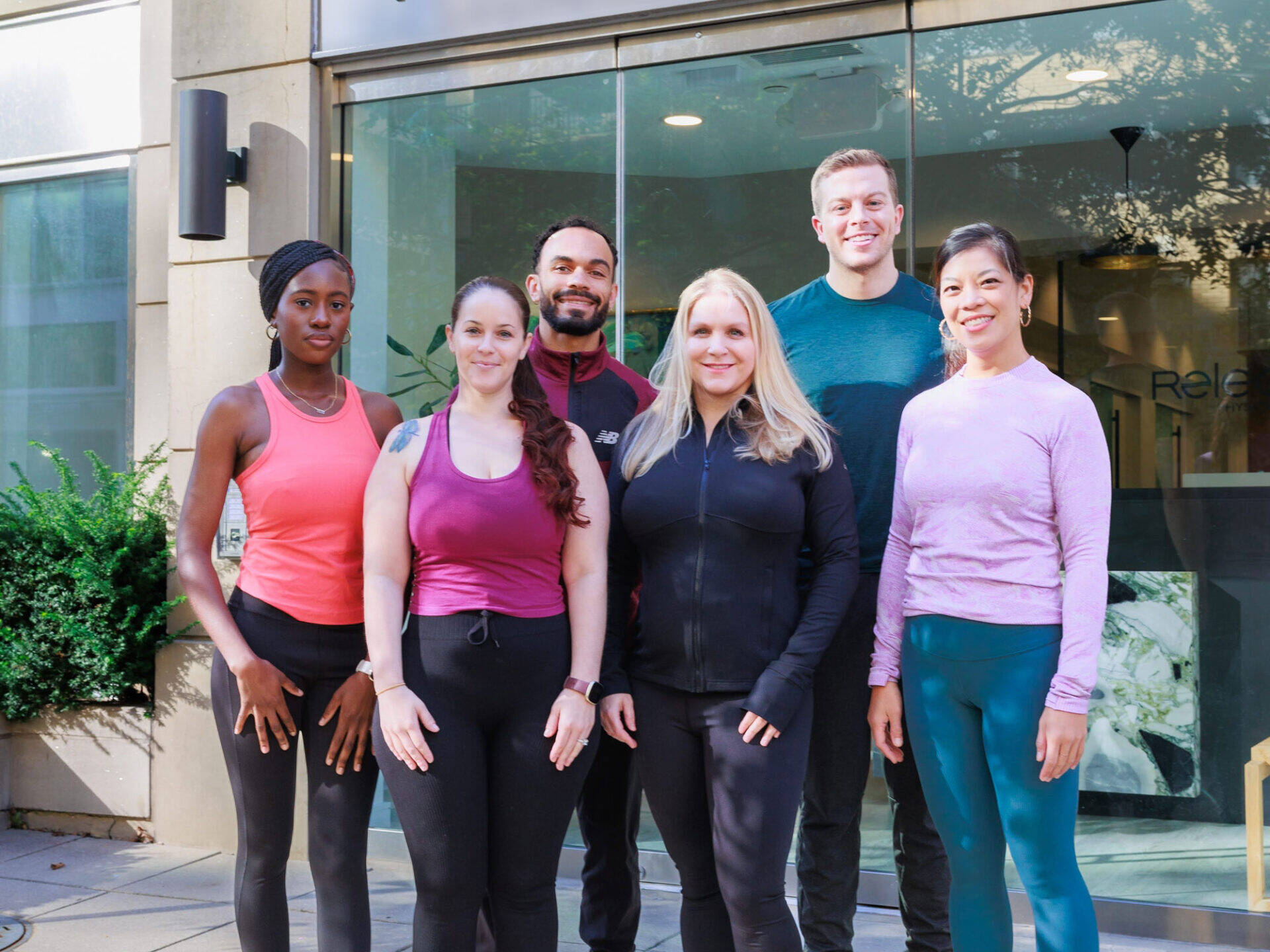
Dr. Cari Simon PT, DPT, CMTPT, ART
Owner & Physical Therapist, Release Physical Therapy Washington, D.C.
Dr. Cari Simon received her Doctorate degree in Physical Therapy from the University of Hartford. A former All-New England and All-State soccer player, she was part of the U.S. Women’s Soccer National Team pool, but ultimately decided to redirect her career in pursuit of her true passion: care. She is now one of the top physical therapists in Washington, DC. As one of the most highly regarded physical therapists in Washington, DC, Dr. Cari Simon’s treatment approach combines manual mobilization and manipulation techniques with individualized therapeutic exercise. She is a full body Active Release Technique (ART) provider. Additionally, Dr. Simon utilizes McConnell, athletic, and Kinesio Taping methods, as well as Trigger Point Dry Needle Therapy. When she is not helping her patients meet their physical goals, Dr. Simon enjoys networking with other physical therapists in Washington, DC, outdoor activities and spending time with her family.
Ethan Gramstad PT, DPT, CMTPT
Physical Therapist, Release Physical Therapy Washington, D.C.
Dr. Ethan Gramstad is the newest addition to the staff at Release Physical Therapy. A native of Virginia, he has recently relocated to Washington, DC following the last two years of practicing PT in Denver, Colorado. He received his Bachelor’s degree from the University of Virginia where he was a member of the UVA Men’s Rowing team for three years. It was that experience that ignited his interest in the science of exercise, as well as physiology and anatomy. He went on to obtain his Doctorate of Physical Therapy from Old Dominion University from Norfolk, Virginia in 2017.
Dr. Gramstad uses manual therapy and mobilization techniques to obtain optimal patient outcomes and places a high priority on establishing a strong patient-therapist relationship. He focuses on assisting his patients in meeting their physical goals and finds satisfaction in the application of individualized exercise programs, as well as dry needling to achieve success. He has previous experience in providing pre and post-operative therapy protocols and treating the outpatient orthopedic population. Besides his rowing days, Dr. Gramstad has personally participated in endurance sports; running Cross Country and multiple marathons and continues to maintain a devotion to a rigorous gym regimen.
Dr. Stephanie Lam PT, DPT, CMTPT
Physical Therapist, Release Physical Therapy Washington, D.C.
Dr. Stephanie Lam received her Doctorate of Physical Therapy from the School of Health Technology and Management at Stony Brook University, after attaining dual degrees in Biology and Psychology from the University of Virginia. She is highly experienced in several fields of adult orthopedics, including post-surgical recovery, acute sports injury rehabilitation, athletic performance improvement, and chronic pain management. She also has a passion for pediatrics and has treated kids of all ages for congenital and developmental issues.
Dr. Lam uses her patient’s individual goals to guide treatment, addressing her patient’s symptomatic impairments while considering their day-to-day ability to function and perform athletic and recreational activities. Dr. Lam incorporates manual therapy throughout her treatments, specializing in extensive deep soft tissue manipulation and mobilizations of the spine and peripheral joints, as well as dry needling.
Deborah Ajala PT, DPT, COMT, CMTPT
Physical Therapist, Release Physical Therapy Washington, D.C.
Dr. Deborah Ajala is an astute physical therapist who takes her time to get to know her patients in order to provide the best possible care. Dr. Ajala’s lifelong passion for caregiving led her to a career in physical therapy. She received a Bachelors degree in Health Sciences with a minor in Exercise Science and Wellness Management from the University of Sciences in Philadelphia, where she obtained a Doctorate in Physical Therapy thereafter. Dr. Ajala holds certifications in Orthopedic Manual Therapy (COMT) and Trigger Point Dry Needling (CMTPT). Her goal with each patient is to optimize their return to function.
Dr. Ajala previously worked at an Outpatient Physical Therapy Clinic in Maryland as a staff clinician. There, she served a diverse patient population treating a wide range of orthopedic conditions including sports medicine, pre/post operative rehabilitation, overuse injuries and several others.
In her free time, Dr. Ajala enjoys spending time with her family and friends, reading, and sports. She also enjoys exploring new DC neighborhoods and is a restaurant enthusiast.
Mia Smyser PT, DPT, COMT, CIDN
Physical Therapist, Pelvic Floor Therapist, Release Physical Therapy Tysons and Washington, D.C.
Dr. Mia Smyser is a native of the DMV. She received her Doctorate in Physical Therapy from the University of Miami, after receiving her Bachelors of Science in Exercise Science from the University of South Carolina. She thinks movement is of foundational importance and is dedicated to improving people’s mobility and function and helping them achieve their optimal physical well-being.
She is passionate about continuing to learn and grow in the profession. She is a Certified Orthopedic Manual Therapist (COMT), certified in Integrative Dry Needling and is continuing her coursework with Herman & Wallace as a pelvic health therapist.
Dr. Smyser previously worked at outpatient physical therapy clinics in Washington, DC and Falls Church, VA, treating a wide variety of conditions including sports medicine, pelvic health, pre/post-operative rehabilitation, and pediatrics, among others.
In her free time, she prioritizes spending time with her husband, son & dog; playing soccer and running; coaching HIIT and checking out new restaurants.
Paul Miller LMT
Massage Therapist, Release Physical Therapy Washington, D.C.
Paul Miller is a dedicated massage therapist with expertise in medical massage, deep tissue therapy, and myofascial release. Paul customizes each session to meet the unique needs of his clients, focusing on relieving tension, restoring mobility, and enhancing overall physical well-being.
Trained at the Northern Virginia School of Therapeutic Massage, Paul has also completed all three of Howard Rontal’s Myofascial Release courses, further refining his ability to address chronic pain and movement restrictions. His approach is rooted in the belief that targeted, intentional bodywork can be a transformative tool for recovery and long-term health.
Sally Sroge, PT, DPT, COMT, MDNC
Physical Therapist, Release Physical Therapy Washington, DC
Sally earned her Doctorate in Physical Therapy from Radford University. Originally from Boulder, Colorado, she grew up immersed in sports and the outdoors, and her experience as a collegiate basketball player fueled her passion for movement and rehabilitation.
For the past three years, Sally has practiced in Washington, D.C., specializing in manual therapy, therapeutic exercise, and individualized treatment plans. In 2025, she completed her clinical orthopedic residency with the North American Institute of Manual Therapy (NAIOMT) and earned her Certified Orthopedic Manual Therapist (COMT) credential. She is also trained in Trigger Point Dry Needling and holds certification through the Barbell Rehab Method, allowing her to bridge the gap between rehab and strength training.
Outside the clinic, Sally enjoys powerlifting, exploring D.C.’s vibrant food scene, and spending time with her partner and their two cats.
Release Physical Therapy Treatments
Our experienced physical therapists have advanced training in outpatient orthopedic physical therapy. Our physical therapy services include sports therapy, injury rehabilitation, pre-surgical therapy, post-surgical therapy, chronic pain management, as well as wellness and prevention. Specialized treatments at Release Physical Therapy include:
Shockwave Therapy
A non-invasive medical treatment that utilizes acoustic waves to treat various musculoskeletal conditions and promote healing.
K-Laser Therapy
The use of specific wavelengths of light to improve healing time, pain reduction, increase circulation and decrease swelling.
Dry Needling Washington DC
Needle treatment that decreases pain, increases range of motion and improves strength by inactivating myofascial trigger points.
Active Release Technique in Washington, D.C.
Massage and movement-based technique that treats problems with muscles, tendons, ligaments, fascia and nerves.
Therapeutic Medical Massage
Reduces muscular pain and inflammation, relaxes overused muscles, improves posture and movement awareness, and enhances performance.
BFR Training Washington DC
Rehabilitation therapy and performance training technique using a personalized tourniquet system to reduce atrophy and increase strength.
Kineseo® Taping Method
Reduces muscular pain and inflammation, relaxes overused muscles, improves posture and movement awareness, and enhances performance.
Running Assessment Washington DC
Individualized analysis designed to identify strength, gait, and alignment imbalances to prevent injury and improve your current training program.
Functional Training
Exercise regimens that integrate multiple muscle groups, joints and the brain to assist in everyday movement, physical activities and athletics.
Graston Technique
Instrument-assisted soft tissue mobilization used to address soft tissue lesions and fascial restrictions resulting in improved patient outcomes.
Release Physical Therapy Services
At Release Physical Therapy, we treat you with our hands, not just machines. We offer a full range of manual therapies, as well as both traditional and non-traditional techniques for the best in comprehensive care. We work one-on-one with our patients to develop an individualized treatment plan that meets their unique needs, conditions, wellness goals and fitness levels.
Physical Therapy Treatment for Pelvic Floor Issues
At Release Physical Therapy, our experienced therapists conduct a thorough assessment to identify the underlying causes of your pelvic floor issues and create a personalized treatment plan to promote healing and alleviate the problems you’re experiencing.
Physical Therapy Treatment for Upper Back/Shoulder Pain
At Release Physical Therapy, our experienced therapists perform comprehensive assessments to see how they can help with your upper back pain. We then design individualized treatment plans aimed at promoting healing and relieving your specific issues.
Physical Therapy Treatment for Lower Back Pain
At Release Physical Therapy, our seasoned therapists perform comprehensive assessments to pinpoint the root causes of your lower back pain problems. We then design individualized treatment plans aimed at promoting healing and relieving your specific issues.
Physical Therapy Treatment for Knee Pain
At Release Physical Therapy, our seasoned therapists perform comprehensive assessments to pinpoint the root causes of your knee pain problems. We then design individualized treatment plans aimed at promoting healing and relieving your specific issues.
Physical Therapy Treatment for Ankle Pain
At Release Physical Therapy, our experienced therapists conduct thorough assessments to identify the underlying causes of your ankle discomfort. From there, we craft personalized treatment strategies tailored to foster healing and alleviate your unique concerns.
Physical Therapy Treatment for Tennis Elbow Pain
At Release Physical Therapy, our seasoned therapists perform comprehensive assessments to pinpoint the root causes of your tennis elbow pain problems. We then design individualized treatment plans aimed at promoting healing and relieving your specific issues.
Physical Therapy Treatment for Arthritis
At Release Physical Therapy, our expert therapists conduct thorough assessments to gain insight into your arthritis symptoms. With this understanding, we craft personalized treatment strategies aimed at promoting healing and addressing your unique requirements.
Release Physical Therapy Location & Hours
Visit us at our convenient West End Washington DC location. We pride ourselves on providing the highest level of care and convenience to our patients. Our appointment times flexible – let us know how we can best accommodate you.
Release Physical Therapy - Washington DC
2134 L St NW
Washington, DC 20037
Get Directions
Location Hours
Mon - Thurs: 6:00am - 8:00pm
Fri: 6:00am - 5:00pm
Sat - Sun: Closed
Now Accepting New Patients
Feel Your Very Best
Whether you’re an athlete that plays hard on the field, or a weekend warrior that plays hard in life, committing to a physical therapy program can help to keep you moving forward.
Latest Blog Posts
Follow us on Instagram!
Error: No feed with the ID 2 found.
Please go to the Instagram Feed settings page to create a feed.


